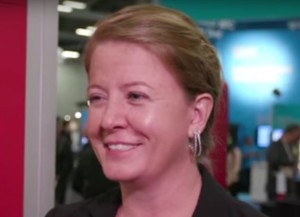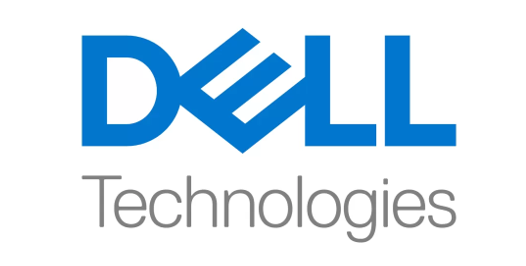
Molly Rector, CMO at DDN
Today DDN announced it has increased its leadership as the dominant storage provider of the world’s fastest supercomputers for the eighth consecutive year with storage solutions that power more than 70 percent of identifiable sites on the most recent TOP500 list. To learn more, we caught up with the company’s Chief Marketing Officer, Molly Rector.
insideHPC: What is the main takeaway from DDN’s impressive growth on the TOP500?
Molly Rector: DDN is the only company in the HPC industry with a complete end-to-end storage offering from burst buffer to SSD acceleration to archive and the cloud. DDN continues to increase its HPC leadership margin with our relentless focus on delivering the most innovative, ground-breaking technologies for the HPC market. We help to enable the science and innovation of our users by delivering unmatched price/performance and reliability. DDN has invested not only in continual product innovation but also in developing an unmatched depth of technical expertise in the field to architect, deploy and optimize the complex solutions required in today’s HPC workflows. We’ve led the TOP500 list for eight consecutive years and continue to increase our leadership margin – most recently boosting our presence to an unprecedented 70% of the identifiable largest supercomputing sites worldwide.
insideHPC: What are the three main things you showcased last week at ISC 2016?
Molly Rector: We showcased three of our latest solutions for the HPC and data-intensive Enterprise markets. These included:
- The DDN EXAScaler ES14K Lustre Appliance (announced June 14), which combines the industry’s fastest storage platform from DDN with Intel Enterprise Edition Lustre parallel file system to deliver the world’s most advanced Lustre appliance.
- DDN Flashscale, (announced May 17), which is our at-scale, enterprise-ready flash storage infrastructure platform that will modernize both your workflows and datacenter. By leveraging this DDN platform, IT can immediately deliver greater business agility by powerfully unlocking new technical capabilities, which enable a much wider breadth of application and multi-step workflow support for your scientists, developers and line of business owners.
- WOS Object Storage for active archive, private and hybrid cloud offerings. WOS enables the HPC market to share and retain their data in a cost effective long-term archive that can be accessed locally or globally. As the HPC market continually is challenged with innovation in increasingly tight budget constraints, WOS enables users to efficiently archive data from Lustre or GPFS to leverage the more expensive high performance storage most effectively.
insideHPC: With all the flash-based storage offerings out there, how is DDN differentiating itself?
Molly Rector: DDN’s All-Flash arrays are targeted to use cases that have high performance, latency sensitive requirements and handle both structured and unstructured data. When compared with the leading Enterprise all-flash array options, DDN typically provides 4-5x more performance for the same cost/GB. For the large-scale use cases, we provide all-flash storage for as low as $0.05 per I/O and $1/GB – so we are extremely efficient and affordable, plus we provide ultra-low latency. Environments such as post-production and others don’t need and don’t want deduplication and replication features in their systems as they just increase latency and slow things down unnecessarily.
insideHPC: How does having one DDN unified architecture across your product portfolio help customers solve their business challenges?
Molly Rector: Everyone has always wanted to take advantage of the cost, content distribution or data sharing benefits provided by automated data migration – a.k.a. ‘tiering’, but until now the return on tiering cost and complexity just has not been there for most sites. With DDN’s shared namespace across fast data, active archive, cloud and deep archive, our customers get all the benefit of being able to create the right storage tiers for their data, without code modification or administrative complexity.
insideHPC: Your new all-flash device is very interesting. Is all-flash always the right way to go for HPC?
Molly Rector: A number of applications and workflows benefit from an all-flash approach, or from a tiered approach that uses a tier of flash to maximize performance of a specific application or data set. Extreme read-intensive, write-intensive or particularly latency-sensitive applications top the list, including:
analytics, database acceleration, Hadoop environments ,banking, compliance, back testing and high frequency trading, genomics sequencing, healthcare, drug discovery, pharmaceuticals, manufacturing, automotive, aerospace, chip design, cloud edge, web-scale environments, fraud protection and detection, credit card validation, IOT / sensor generated data capture and analysis, real-time data processing, seismic processing, and weather forecasting, among others. We offer and recommend other modalities for activities such as archiving, distribution and collaboration.
insideHPC: We are seeing a lot of spectacular numbers here at ISC this week. What are the WOW stats from DDN you can share?
- Molly Rector: DDN technologies deliver many WOW statistics and metrics, including:
Best Cost – With a price point as low as $1/GB and $0.05 per I/O, plus best of breed performance, capacity, latency and scale, DDN’s Flashscale does not require any compromise on TCO; - Highest Performance – DDN concurrently delivers extreme levels of IOPS (6 million) and throughput (60GB/s) in just 4U, with up to 60 million IOPS and 600 GB/s in a single rack;
- Highest Capacity – Leverages the latest NVMe and SAS or a mix of both SSDs in a high density hyperconverged, shared storage architecture (up to 576TB in 4U and 7.3 Petabytes in one rack); and
- Lowest Latency – Delivers latencies as low as 100μs for superfast embedded application speeds thanks to its specially designed internal PCIe Gen3 fabric.




